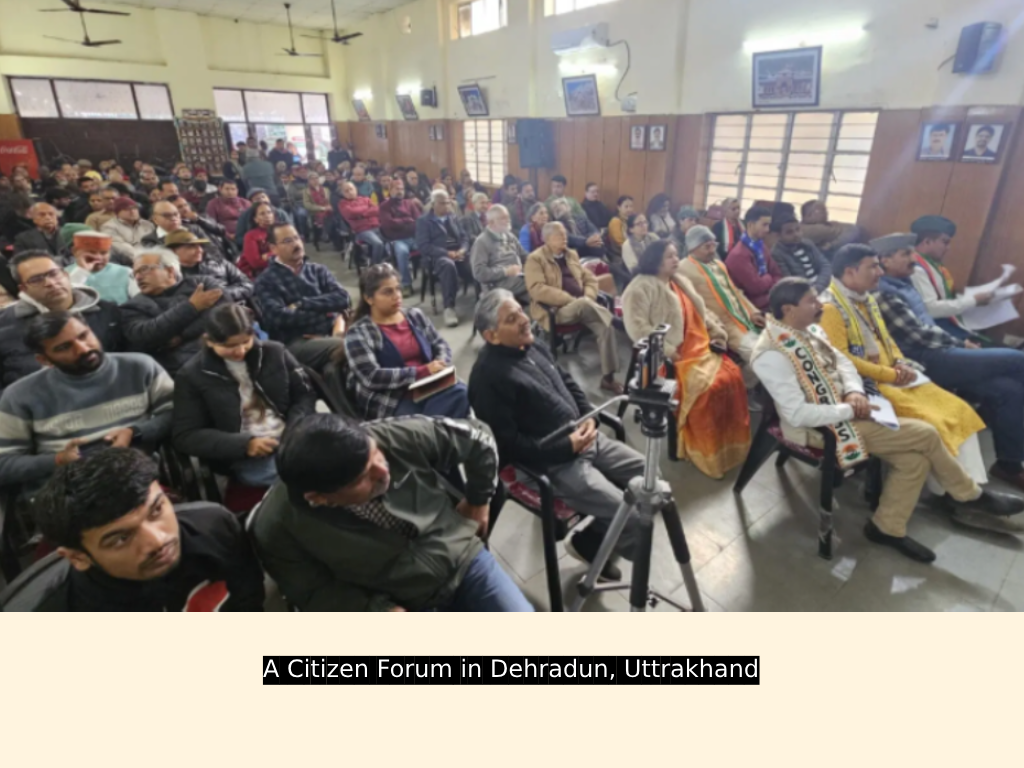Source:https://citizenmatters.in/dehradun-citizens-forum-mayoral-dialogue-local-governance/, 2025
After spending the first few weeks of the fellowship immersed in legal frameworks and state-level policies, I found myself at a crossroads. The gap between policy and practice was clear, as I’d concluded in the earlier blog, but I didn’t want this to become yet another story of how things don’t work. I needed to ask a different question: Is there any place where participation actually works? Instead of only looking at what’s missing, I began looking for what exists -however scattered, however imperfect. This meant going beyond the mandates of the 74th Constitutional Amendment and the Community Participation Law to search for real examples of citizen participation in the governance of Indian cities.
I began with what we called “case landscaping”, a wide-ranging scan of cities and towns across India. The goal was to ask: Where are citizens actively involved in local governance? Through which platforms? And with what impact?
Some answers came from published reports. Others emerged through conversations, with field practitioners, civil society leaders, elected representatives, and sometimes even residents themselves.
Participation is happening, though not always in the formal ways our laws envisioned it. While Ward Committees (WC) and Area Sabhas (AS) exist largely on paper in many states, a parallel ecosystem has evolved at the ground level that is dynamic, context-driven, and multi-tiered.
While national mandates like the Ward Committee and Area Sabha are designed for the ward level, in practice, along with WC and AS, a parallel and often vibrant culture of participation has emerged at the sub-ward level. Community-based groups such as Resident Welfare Associations, Self Help Groups, Slum Dwellers’ Associations, and Neighbourhood Committees function as vital spaces for participatory decision-making at the hyperlocal scale of the city, catering to various socio-economic groups. At a few places, avenues like citizen forums and community development societies provide city-level participatory platforms.
The more I dug, the more I began to notice patterns. While the platforms and actors varied widely, some underlying elements seemed to repeat themselves, whether I was looking at a small town in Rajasthan or a ward in a metropolitan city like Bengaluru. That’s when I realised I needed to move beyond stories and look for patterns. I needed a way to understand what makes participation effective across these varied contexts.
Working closely with the team at Janaagraha, I started organising my observations into broad themes. The cases that stood out, where participation wasn’t just symbolic but actually shaped decisions, had a few things in common. Things like strong community leadership, infrastructure for conducting meetings, institutional support, or meaningful partnerships between citizens and the local government. Drawing from these insights, legal reviews, practitioner inputs, and case narratives, we eventually arrived at a framework to study participation. These became the lens through which I analysed each case, as a model, not just a narrative.
And so, from a scattered map of forums and experiments, a pathway began to take shape. A framework rooted in real practice, not just policy documents or legal text.
In the next few blogs, I’ll share more on the ecosystem that enables meaningful participation, the role of inclusive design, and how some of these ideas might be adapted in other cities.


